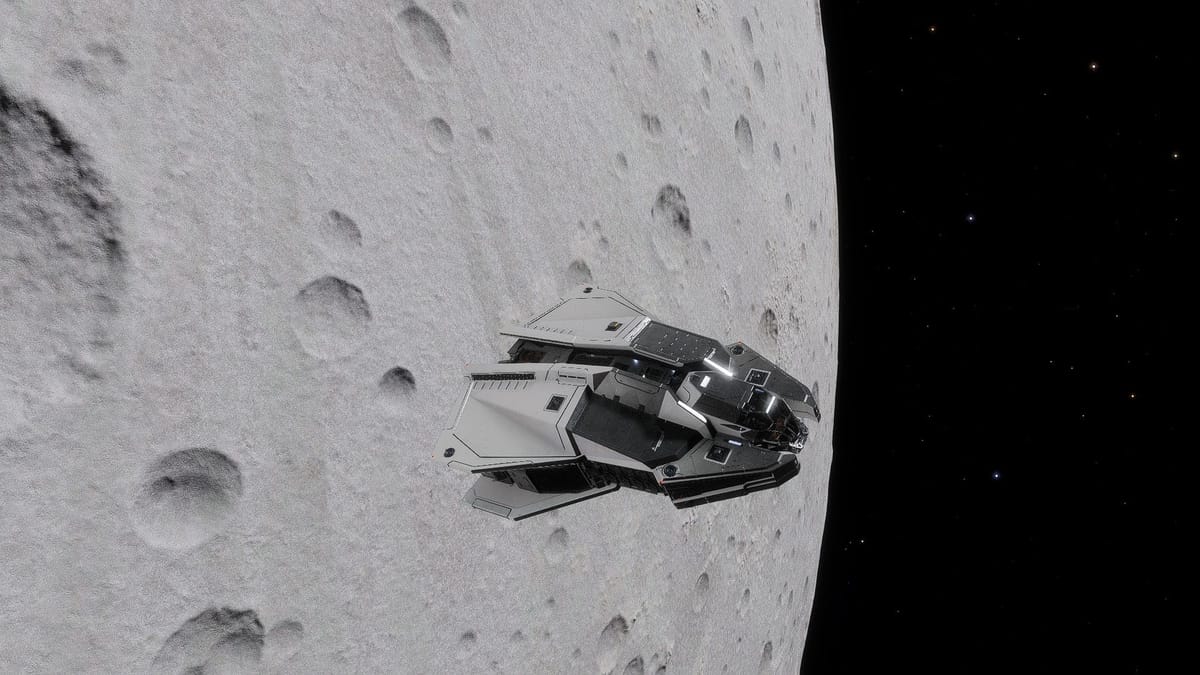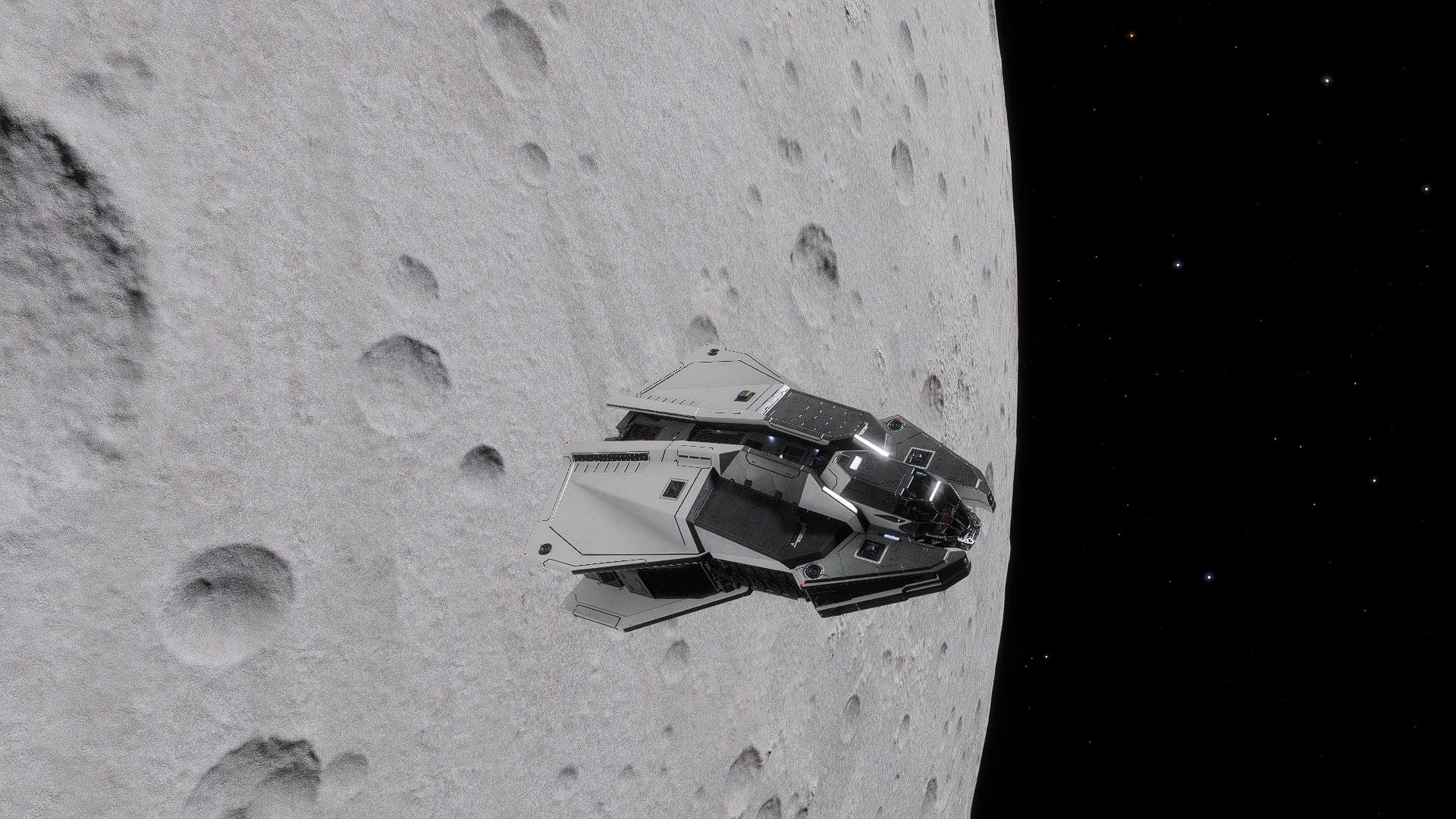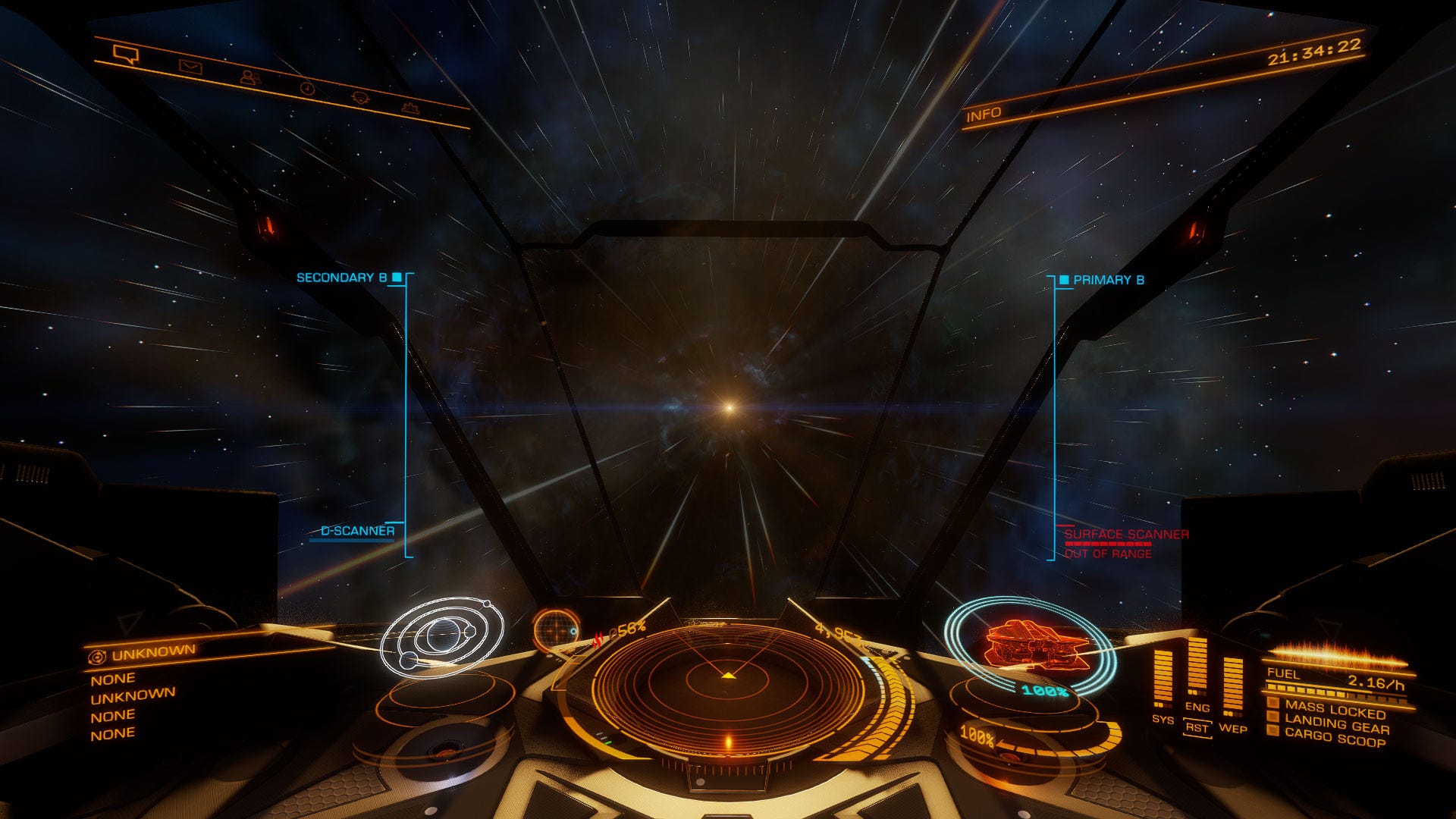Note 58: Houston, do we have a problem?
The stock market equivalent of MaxQ?

Before we get into this week’s Doom and Gloom, I wanted to share a positive development from the weekend.
For the better part of 2021, I’d been trapped in an abusive relationship with my virtual reality headset, a first generation Oculus Quest. The relationship began well enough during the early COVID pandemic, and we took things to the next level when I purchased a dedicated gaming laptop in August of 2021. The reason for doing that was because while the Quest on its own is capable of engaging experiences all on its own, those experiences are like a phone game compared to an AAA big studio game release like Halo on the latest Xbox.
Laptop purchased, I also picked up the relevant cables that would allow the Quest to serve as a headset for much more powerful experiences rendered on the gaming laptop and its NVIDIA 2060 RTX graphics card. And the game to be played was the initial inspiration for this newsletter, Elite Dangerous. For the new readers, Elite is an open-galaxy space simulator, where you are a pilot (called a CMDR) who is plotting your own destiny among the four-billion plus star systems in the Milky Way galaxy. (And, yes, if you could live for a thousand years, and play all during that time, you may have a chance of visiting a non-trivial number of them.)

So, headset and laptop configured, I explored the galaxy in virtual reality. I tracked down a ghost ship on the edge of the galaxy, and I made my way to Sagittarius A*, the super-massive black hole around which the rest of the galaxy orbits. I spent some time honing my combat skills in local skirmishes and civil wars, and ended up with a decent fleet, from my beloved Diamondback Explorer I used to get discover new planets and stars, to my engineered Vulture, which I flew around human-inhabited space, in case someone decided to take a poke at me. It was probably the greatest gaming experience of my life.
Then the Odyssey update was released. That expansion infamously had its own teething problems, but it introduced the issue that soured my relationship with the Oculus. I could get started and play for a random amount of time, and then the system would disconnect, typically when I was in the middle of a dogfight or trying to not fall into a white dwarf star. Since all of this happened while I was in VR, I would madly scramble to shut off the laptop, as restoring the connection was impossible without a full reboot. After far too many rage-inducing interruptions, my time in VR dwindled. It simply wasn’t worth the headache. (To get a sense of what a VR disconnection is like, imagine that you’re driving your car in town, and someone behind you randomly decides to throw a bag over your head. You have to get the bag off, direct the car into a place where it won’t damage you or someone else, and then punch the smartass who thought it would be fun to do that in the dick.)
Over time, the laptop and headset started collecting dust. The inevitable rage-storm just wasn’t worth it. Instead of flying spaceships in VR, I turned to playing cards on my phone and iPad (GWENT: The Witcher Card Game if anyone’s curious.) When I had a little time, I would check in and see if there were any software or driver updates that addressed the issue and this pattern of disappointment persisted for months.
Until this weekend.
Saturday, I decided to see if anything had changed, and was disconnected as per usual. However, I had my debugging hat on and determined that the issue was a disconnection between the Oculus client software on the laptop and the Oculus Link subsystem on the headset. I did a bit of Googling and discovered two things:
- The disconnection was likely because Windows scanning files on the headset, and the solution to that was to deny a permission the headset asked for, so that Windows wouldn’t have access to those files.
- A feature called Oculus Air Link was now available on my first generation headset.
With the first item in mind, I attempted to set things up while denying the headset the permissions it requested, and I enjoyed a longer play session. However, whatever hardware issue prevented a reliable connection between laptop and headset persisted. I would still get randomly disconnected, just after a longer period.
With nothing to lose, I decided to try the Air Link setup. For those of you for whom this sounds Greek, when you connect a headset to a laptop, you need a high-quality USB 3 cable (which I had purchased at no small expense). This cable was there to provide the laptop enough bandwidth that it could run the headset like two additional little monitors (one for each eye). In contrast, Air Link is a technology that uses the local network connection to beam those images from the laptop to the headset. It’s much lower bandwidth than a dedicated cable, and I’m running with networking infrastructure at least half a decade old, so my expectations were not high.
The setup was simple enough, and soon enough, I was playing. Due to network congestion, the image was degraded with video encoding artifacts, but the damn thing worked. And it kept working. Once I was up and running, I decided to give the new setup a stress test and gave myself as much time as needed to see when it would crap out. And it didn’t. It kept working, and I allowed myself the hope that I’d be able to get back to some things that I’d been working on (unlocking all the engineers) that I’d given up on due to Oculus flakiness. I made some great progress on Saturday and played well into the night.
That’s not to say that it was perfect. As I mentioned before, the compromises that the system made degraded the overall visual quality of the game. Everything rendered well in 3D, it was more like sometimes having dirty glasses while looking at stuff due to the video compression artifacts. And there were places where the game would stutter for a minute or two (I blame Windows for doing something during that time), but unlike the abrupt disconnection and cursing sessions with the wired connection, the game was playable in a degraded state, and quickly enough, it was back to normal again. Overall, I was very impressed, and expect to spend more time in VR moving forward.

I have some plans over the next week to upgrade my local network infrastructure to see what other improvements I can achieve. My test this weekend had both the laptop and VR headset communicating over my local wireless network. Each frame of the video had to make it from the laptop to the wireless hub, then from the wireless hub to the headset. I’m curious to see how well it works when I get the wired part up to gigabit speeds, and the overall network transit time is reduced. I expect that I’ll get a much clearer picture (not that the one I was getting was all that bad) and the number of stutters will be reduced.
And from a wider perspective, this episode also illustrates how well things are coming together in virtual reality (I refuse to use the term metaverse) when it comes to fundamental infrastructure. I didn’t expect Air Link to work nearly as well as it did - and I gave it a good workout for at least 8 hours this weekend - and this is very encouraging. I didn’t think that we’d crossed the zone where we’d be from being wired to our headsets, but here we are. This opens up some very interesting possibilities in the near-term future.
And for me, it also means that I’ll have to exercise some restraint so that I don’t get sucked in to the detriment of everything else that I have going on. However, I will celebrate the win. Not only do I have my game back and playable, but going wireless means that I can retire the long USB cable that’s been snaked behind my office for over a year. Win-win.
Rocket stock check-in
Last year, I spent a significant amount of time on this newsletter covering my investments into rocket and space stocks and felt that it was time to check in. Overall, my investment thesis remains intact and I stand by the investments. However, it hasn’t been a smooth ride to the moon - it’s been quite the opposite.
Digging into my E*Trade account, here are where things stand:
Astra Space (ASTR): This was my first rocket stock purchase. I originally bought SPAC shares after the merger target was announced around in the neighborhood of $17 per share (with warrant). I’ve used recent dips (more below) to increase my position to a point where my average price paid is $10.1969. Shares closed last Friday at $6.13, resulting in a 39.88% loss for me at the moment.
Rocket Lab (RKLB): My second rocket stock. I originally bought in post-SPAC merger announcement around $14 per share, and have used the dip to enlarge my holdings so that my average price paid is down to $11.5645. Shares closed last Friday at $10.86, resulting in a 6.09% loss for me thus far. Also note that I’ve been very aggressive in expanding my holdings of this company and on a value basis, it represents over 60% of my rocket portfolio.
Virgin Orbit (VORB): I purchased this post-SPAC merger announcement for $10.20 per share (and warrant). It closed on Friday at $8.06, resulting in a loss of 20.98%. I have not increased my holdings of this company since my initial purchase.
Planet Labs (PL): I added this company to my holdings (they photograph the entire Earth every day using their own private network of satellites) after some bad news drove their share prices down quite a bit. I paid $6.4359 per share and they closed at $5.37 on Friday, resulting in a loss of 16.56%.
None of these prices are great and overall, I’ve lost about a quarter of money I sunk into these companies to date. So, what’s been going on? A combination of company-specific and general market factors.
On the company-specific front, Rocket Lab (RKLB) is the only company of the four to escape some specific bad press. Rocket Lab is chugging along and expanding on schedule, so its losses are mostly due to an overall weak and skeptical market. (More on this below.)
Astra was suffering the same market blues as Rocket Lab, but dropped precipitously when a hedge fund published a short report skeptical of Astra’s ability to build and maintain the market value that it had sold to investors. The biggest issue to come out that report was the speculation that the small launch market that Astra is targeting will never be as big as Astra presents, and it simply won’t do enough volume to justify its inflated value. There was some concern in that report about the reliability of Astra’s rockets, given that it’s not pursuing a reusable rocket strategy, but a “build lots of cheap disposable rockets fast” strategy. While this may have also pushed down ASTR’s share price, that’s a relatively minor issue compared to future addressable market size.
Virgin Orbit got off to a rough start as its SPAC offering failed to raise as much capital as expected, as SPAC investors decided to get their money back instead of converting to shares. And since it’s also targeting the same small launch market that Astra’s pursuing, the addressable market size impacted its shares as well. It was trading as low as $5.88 this last week, until the company rang NASDAQ’s opening bell and showed New Yorkers one of its rockets in Times Square:
This bit of publicity seems to have lifted VORB share prices out of the gutter it had been much of the week.
I purchased Planet Labs after its stock dropped precipitously after they failed to disclose the loss of Afghanistan as a customer (after the Taliban takeover) and some questions arose about their public filings. I purchased after that dip, and the additional dip since then has likely been to the overall weak market.
Speaking of the weak market, the last several weeks have been rough on technology and growth stocks in general. Some of this may be cyclical, but I believe that an ongoing challenge for these companies will be rising interest rates, which will make other investments (such as bonds) more appealing at the expense of stocks in general and early-stage growth stocks specifically. Furthermore, for the space sector in general, news has been quiet. There haven’t been many new launches, and until last week’s Virgin Orbit stunt, not a lot to put these companies on investors’ radars. I expect this to change once we get back to launches in 2022.
On my end, I’m looking at this portfolio as being composed of two bins: proven and speculative. The “proven” bin contains Rocket Lab and Planet Labs. These are companies with deployed technologies that they are improving, with existing revenue streams. Their challenge isn’t so much technological as operational: grow the business and improve how that business is being done. The other bin consists of “speculative” stocks, which are Astra and Virgin Orbit. These companies are in the process of proving that their technology works, and establishing revenue streams are their primary challenges right now. If short sellers are correct and Astra fails to make its “cheap and disposable” strategy reliable enough, the size of the addressable small launch market is irrelevant. If Virgin Orbit runs out of capital before it establishes a steady cadence of launches, it won’t matter how flexible their launch method is. So, for both Virgin and Astra, their critical task over the next couple of months is getting stuff into orbit.
My current risk tolerance currently sits somewhere between my traditional index funds and Rocket Lab. (Quite a gap!) I feel like I have enough skin in the rocket game to take a break from investments in the space sector, and will spend the next couple of retirement deposits on things like Vanguard’s S&P500 fund. I feel like I’ve seized enough of the opportunity that the recent dip has created to get my holdings up to a point where I feel like I have enough invested for now. (Though I reserve the right to purchase Relativity Space shares, should they become available to retail investors.) The trick now is being patient enough to see how everything plays out. These purchases were never short-term buys, so the recent drops aren’t bothering me. However, if I come back to them in six to twelve months, and I’m not seeing at least a little bit of positive movement, then I’ll start to sweat.
Going long with these was always my plan, but different folks have different goals and timelines. The only one of these I’d suggest to anyone without a built-in interest in this sector is Rocket Lab. I expect that the rest will be remain volatile beasts for the next couple of years. So, for those of you looking into these, caveat emptor.
Interesting reads
The world just set a record for sending the most rockets into orbit (Ars Technica)
The most important computer you’ve never heard of (Ars Technica)
Inferno puts a button on the X-Men’s most riveting era in decades (Polygon)
So, that’s it for this week, CMDRs. I had a few more Elite screenshots to share, but failed to capture them, so stay tuned for images of my space cowboy hanging out on a moon that looks like it may actually be green cheese.



